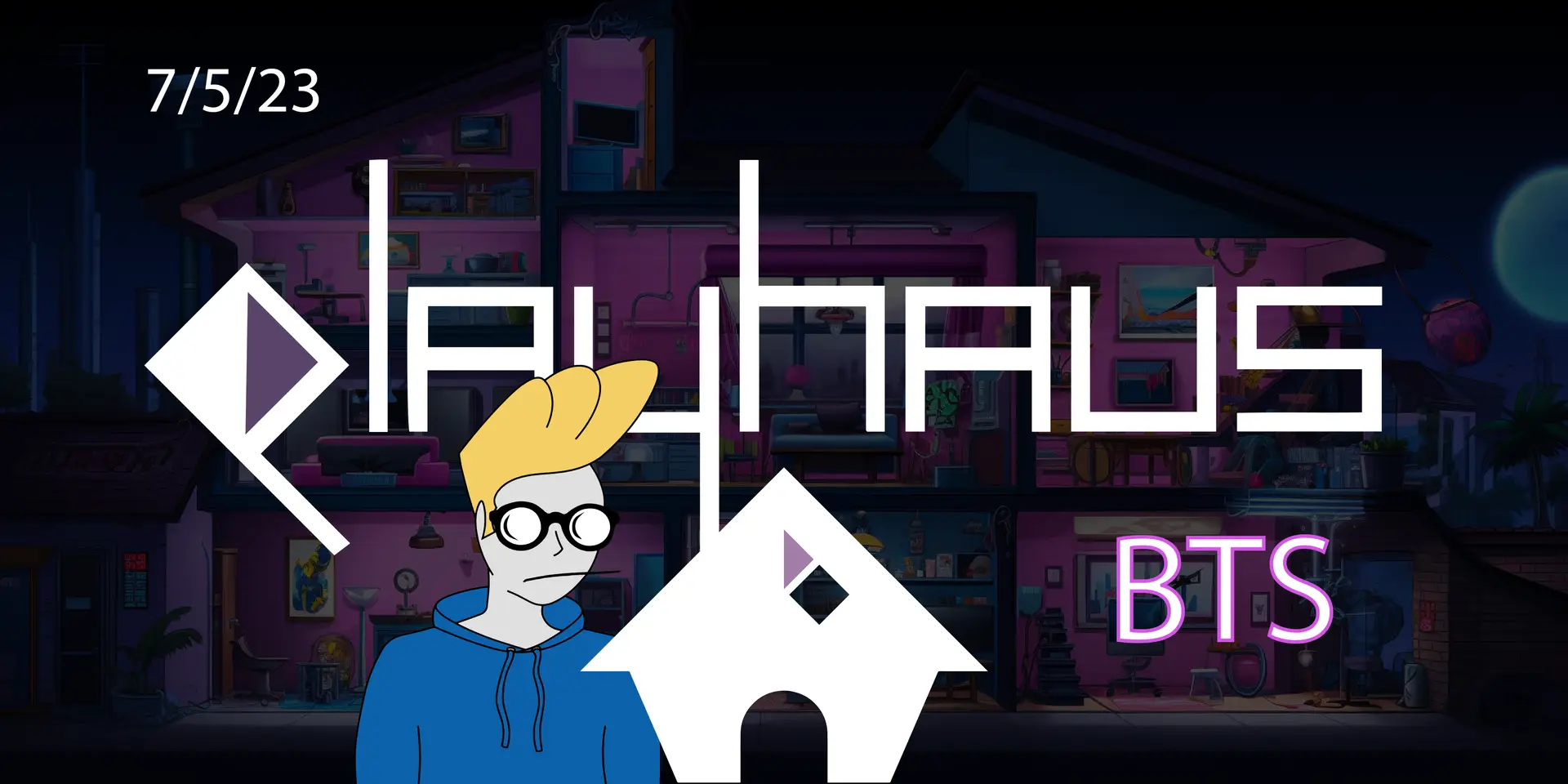Women’s rights may be under attack. The Great Replacement Theory may have gone mainstream. And the country may be out of baby formula. Yeah, I’m pretty bearish on existence of late, too. But at least I didn’t invest my life’s savings in LUNA.
Chad & El Prof
Markets
(Price changes reflect past 7 days as of 5.19.22 @ 4:20 PM EST.)
- Don’t let the readjustment from last week’s Terra turmoil fool you. The market is still pretty grizzly.
- While the degens succumb to despair and the skeptics relish in telling them so, only true H0Rs embrace magical thinking:

Over Bears

A few weeks back, I was plugging the Okay Bears. Today — fittingly, given the turn the crypto tide has taken since then — the Bears Are Not Okay. On Tuesday, someone right-click-saved the entire line of the top-selling Solana-based NFT project, flipped them horizontally in Photoshop, and listed them via the Ethereum network as the Not Okay Bears. They went number one on OpenSea yesterday and got banned from the platform shortly thereafter, but are now verified on LooksRare and going strong.
This blatant act of clout jacking and IP theft feels less like a scam and more like performance art meta commentary on the rich kid degens that champion the pure superiority of the Ethereum Virtual Machine. But those rich kids are likely the same ones who launched it, so I’ll try not to project my own self-awareness onto them. The truth is, Ethereum is the MySpace of blockchains, and its token is a marvelous MVP for what a thriving blockchain protocol can look like. Unfortunately, because community-owned infrastructure is hard to upgrade with a decentralized governance system liable to end in either political or technical based gridlock, ETH’s strong start will surely fade as more sustainable and robust layer 1 ecosystems emerge over the next crypto build period.
But my ongoing diatribe against Ethereum and Proof of Stake aside, the real brilliance of Not Okay Bears is as a brilliant piece of manufactured viral marketing. Maybe it’s just my digital ads background, but I smell the touch of a top tier PR team in their launch strategy. If I’m wrong, then it’s just another flashpan cash grab cooked up by some anonymous degen with an intuitive understanding of our collective lizard brain, in which case it worked out well enough, too. But at the risk of projecting self-awareness anyway, I assume their strategy went something like this:
- Screengrab the only viable Solana NFT project to date.
- Repackage it for Ethereum purists.
- Generate enough Twitter hype to get the name into the ether.
- Flag the IP for theft on Opensea yourself and get the project banned.
- Use press coverage and newfound status as a rare collectible to unleash a rabid FOMO epidemic as the secondary market sells out again and again.
Some galaxy brain genius level shit, if I do say so myself. (*hits bong*) Now, I came up with this theory while listening to The Local Top — a Twitter Space hosted by the Doodles PFP collection — in between discussions of whether to ignore this blatant Ponzi of a JPEG on principle or ape in like a good degen. They overwhelmingly favored the latter. But friends of this newsletter tell me the leadership is feeling burnt out from the past year of meaningless NFT fever. Relatable.
Yes, I, too, yearn to see these projects develop into something more tangible for their community than just glorified day-trading Discords. Which gets back to my original point. No, the Bears Are Not Okay, and won’t be, so long as the Bulls care only about speculation and gambling, not utility and value.
Reign of Terra

With the failure of the Terra ecosystem, the lines between the libertarian utopian pipe dream of the metaverse and the neofascist shit show of the meatspace are blurrier than ever. First, though, a recap. Terra, a ‘stablecoin’ designed to algorithmically remain equivalent in value to $1 at all times, is now trading at $0.0001. It fell from 10th highest DeFi token by trading volume at the top of last week to 213th today. It’s hard to overemphasize just how big a deal this has been to the crypto community. Not only did the crash erase over $40B in value — about 2/3rds of what the Lehman Brothers lost in 2008. But stablecoins, by virtue of their supposed stability, attract more retail investors than riskier assets like Bitcoin and Ethereum, or even, in some cases, traditional stocks. Meaning not only are the waves being felt across the entire crypto market. A whole lot of average people also lost their life’s savings.
Now, an update. A week ago, a few days into the shitshow, the Terra subreddit went dark. Literally. The mods froze all new posting, either a coordinated attack to stifle transparent flow of information between affected parties, or a reactionary response to the top posts: lists of hotlines and suicide notes. So, yeah, like, dark dark.
(BTW: 1-800-273-8255, if anyone out there genuinely needs it.)
Meanwhile, the founder of the Terra protocol, Do Kwon, has been widely panned by crypto founders, VCs, and former fans alike for his proposed plan to revive Terra via hard fork, as well as his mismanagement of the protocol on a whole. Regarding his potential culpability, the fact that Kwon dissolved Terraform Labs days before the crash and the company’s legal team resigned days after bodes poorly. As do his chances of repaying retail investors from his own funds (as web3 luminaries like Vitalik Buterin have called for) considering that, of the 80,000 BTC supposedly possessed by Kwon’s nonprofit, the Luna Foundation Guard (LFG), only 313 remain.
TL;DR: Illuminati adjacent conspiracy theories aside, the whole thing smacks of corporate negligence at best, rugpull at worst. But what is the difference between a rugpull and mere startup failure? What did Do Kwon actually do wrong? And what sort of consequences should he face, if any? In the wake of the Azuki founder’s doxxing, we saw these questions briefly raised by the Crypto Twitter ether last week. But they seem more pressing than ever today. And so, per usual, we’ll do as no one’s asked, and take it upon ourselves to answer them.
From the start, Terra has looked unstable, to those who know what to look for. Per the NYT, a number of institutional investors sold their holdings in the weeks and months leading up to the crash. Some even flagged the points of failure far earlier, as the initial white paper circulated. Even an informed third party observer should’ve known something was wrong with a stablecoin project promising an APY of 20%. Sure, that number’s low by Ponzi standards — some clearer cut scams guarantee annual percentage yields in the thousands. But, by their very nature, stablecoins are not designed to gain value. So why would investing in one yield you a return, unless it’s being consistently propped up by new investments?
Which brings us to the problem at hand. It’s easy for uninformed observers to ape into crypto. In fact, it’s encouraged. We wrote previously about how attracting ‘dumb money’ into the crypto space is a key component of the marketing strategies of most projects and protocols. The slogans favored by degens serve not only to rally true believers but to shut down skeptics. It’s hard to raise valid concerns when they’re met with a chorus of ‘have fun staying poor’, and the old reliable ‘diamond hands’ literally just means ‘man the sinking ship even when everyone else is dropping life boats.’ In other words, the permissionless nature of blockchain does eliminate institutional gatekeeping, but it also opens up a far more vulnerable demographic to exploitation.
Indeed, accessibility to unsophisticated investors is one of the key distinctions between web2 and web3 companies. To invest in a traditional startup, you must qualify as a sophisticated investor, which requires passing financial certification exams (basically an SAT for sniffing out book cooking and bullshit), or as a wealthy individual with a net worth over $200K. Perhaps more importantly, you must find yourself in a position to invest in the first place. Complex social and professional networks have emerged around Silicon Valley, which on the one hand insulate wealth and social mobility, but on the other, limit private investments from average people, preventing the ripples of startup failure from impacting anyone outside of the 1%. There’s a reason stories like Elizabeth Holmes’ inspire schadenfreude and folk stardom, not suicidal ideation. Victims of investment fraud tend to be criminals in their own right. Sure, it affects the masses from time to time. But no one’s crying for Fyre Festival goers, right?
A system allowing for unsophisticated investors and a culture emboldening them is the main difference between web2 and web3 startups. That, and, not unrelatedly, the bad actors it attracts. Not like Zucc or Travis Kalanick are upstanding citizens or anything, but Do Kwon’s one of those dudes who seems to wake up each day and choose villainy. Aside from being a renowned Twitter shit talker (‘95% [of coins] are going to die, but there’s also entertainment in watching companies die too’, he joked, a week before his own did) Kwon launched a dry run of his algorithmic stablecoin concept, Basis Cash, years earlier under a pseudonym. It failed spectacularly. Rather than pivoting, or even learning from his mistakes, he simply rebranded the concept and tried again. But it wasn’t until the second time around that he ran up against the main difference between web3 startup failure and rugpulls: pretty much nothing. Except the latter is anonymous. With the former, you have someone to blame.
So is Do Kwon to blame? The ~1,700 investors signed onto a class action sure seem to think so. And he’s being investigated by both the National Tax Service of Korea and the very same SEC he once sued. But, aside from running an unregulated bank about as well as a cocky 20-something could be expected to, being slightly more transparent than most morally dubious Twitter users, and taking salivatingly ironic joy in other blockchain projects’ failures (which, if that’s a crime, go ahead and lock me up) the only real evidence against him to date is in breadcrumbs dug up by Reddit detectives. In a pair of threads, u/Atsoc1993 follows the fake Internet money to the apparent realization that the LFG’s aforementioned 80K BTC moved through a sketchy exchange called OkEx — banned in South Korea for failing to comply with anti-money laundering regulations — and may never have been used to bail out UST. Sounds fraud adjacent, for sure. But it’ll take more than Reddit noir to prove it.
Which brings us full circle, back to the difference between white and whit3 collar crime. There are fewer regulations in crypto than any other financial space, and far more ways to avoid them. If the company’s found liable, it would need to pay back investors. But there’s surely an order of operations dictated in the terms, which would likely leave little to nothing for the retail investors most affected. Lying about using your entire reserves in a doomed attempt to save the company does seem like a convenient way to shirk this responsibility, but any scammer worth their Stripe would’ve fractionalized these holdings into many wallets, untraceable by even the most overzealous Reddit users. And if Kwon really is the richest idiot this side of Mar-a-Lago, and is sitting on $2M worth of Bitcoin in a single mega wallet, he could easily nuke it, never sharing the wallet’s access key and effectively eliminating it from circulation. Even if you LUNAtics can prove he’s responsible, it won’t mean a thing.
It’s important to recognize how crypto has changed not only the content of scams, but the culture surrounding them. The term ‘rugpull’ is a product of unsophisticated investors, dumb money. It wouldn’t be a thing if anonymous Twitter users couldn’t raise massive investments with a few well-placed hashtags — not an issue in Silicon Valley, I assure you. And, as of late, it’s being used to refer not only to blatant scams but to poorly run companies going under, the kind of everyday occurrence that wouldn’t leave a dent in a VC’s cash reserves, but would massacre a Ledger. This is not a new phenomenon. It’s an old one, fucking over new people, much harder.
All that to say, with great power comes great responsibility. And if permissionless access to the financial privileges of the 1% is the utopia degens believe it to be, accept the shared responsibility when it takes a turn for the dystopian. There’s no doubt Do Kwon is an asshole, and very possibly a criminal, too. But there are plenty of hours in the day to fill with due diligence, not just #HFSP and ‘GM’ tweets.
If you were impacted by this shitshow, there’s nothing left to do now but learn from your mistakes, seek out quality information and valid criticisms before making new investments, and hope the dude goes to prison. Or, you could keep reading our shitty hot takes and legally-not-financial-advice. In which case, I’ll remind you that Martin Shkreli and Billy McFarland both got released from prison this week. Cut off one crypto scam, two more shall take its place.
SLOPPY SECONDS
- To all of ‘y’all big boy crypto doods guru crypto picture takers’, Rozay has a message for you




